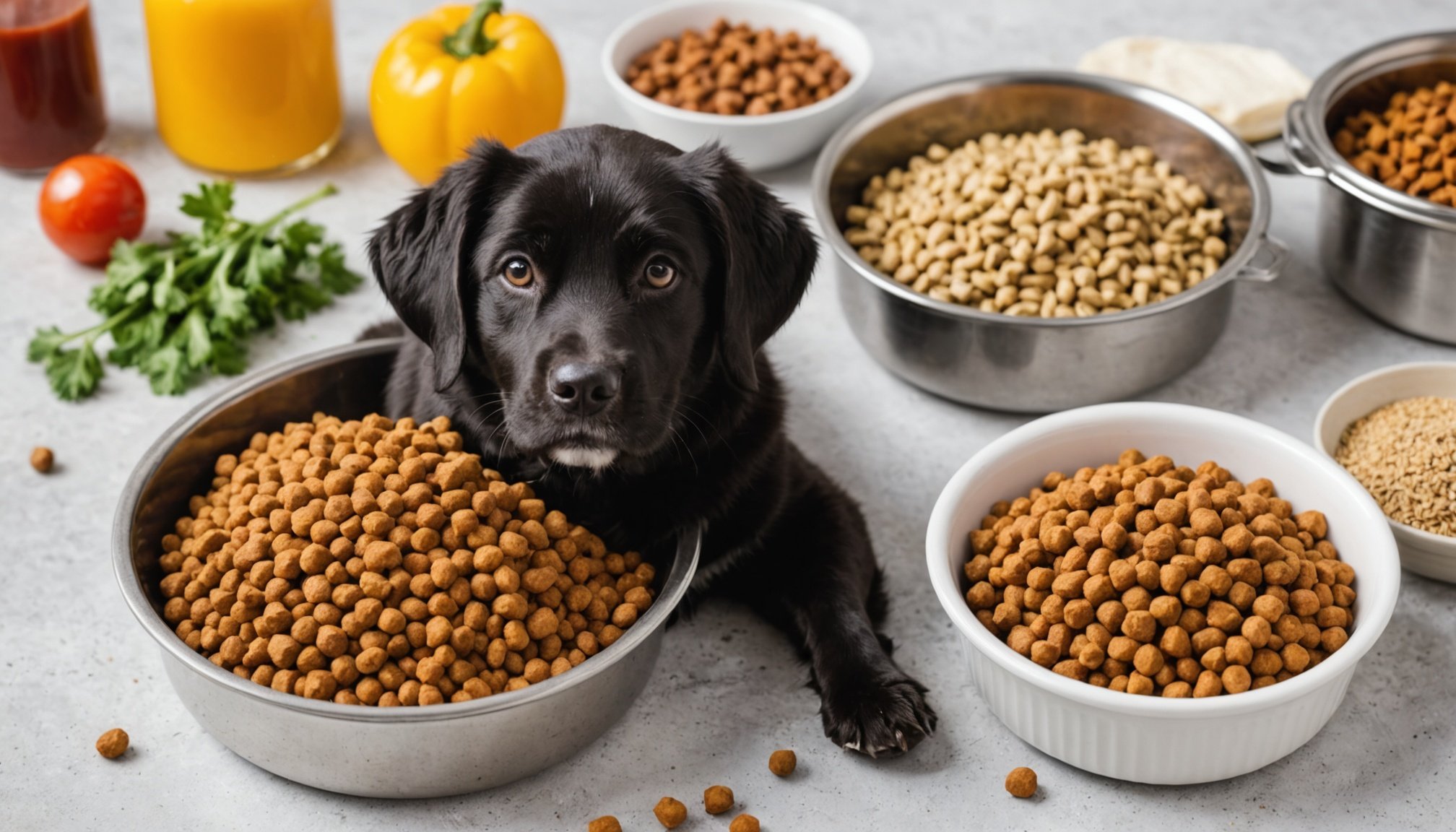Understanding Canine Allergies
Dealing with dog allergies is a common concern for pet owners and crucial for ensuring a good quality of life for your furry friend. Allergies in dogs typically manifest as skin irritations, excessive scratching, or even gastrointestinal issues. Identifying these symptoms early on is essential to provide relief and prevent further complications.
Consulting a veterinarian is vital for a correct diagnosis. A vet can determine whether your pet’s symptoms are due to allergies, infections, or other health issues. This helps in developing a targeted treatment plan that addresses the specific allergens affecting your dog.
Topic to read : Ultimate guide to boundary training: proven techniques to foster respect in your puppy
Allergies can significantly impact a dog’s health, leading to chronic discomfort and stress. They can also trigger behavioral changes and decrease overall well-being. By seeking professional veterinary help, you can manage these conditions more effectively, enhancing your pet’s life.
Some dogs may even develop allergies over time, making it important to regularly monitor their condition. Keeping detailed records of symptoms and any changes in their health can assist the vet in diagnosing accurately. Proactive management and early intervention can mitigate health risks, ensuring your dog’s allergy is well controlled and their health optimally maintained.
In the same genre : Top approaches to combat and prevent chronic ear infections in dogs: essential tips for pet owners
Identifying Allergens in Dog Food
Understanding common food allergens is crucial for managing canine allergies effectively. Dogs can be sensitive to ingredients such as beef, chicken, dairy, or wheat. Symptoms of these allergies may include skin itchiness, ear infections, or digestive issues. Timely identification of these allergens can alleviate discomfort and significantly improve your dog’s health.
Detecting allergens in store-bought dog food requires meticulous attention to the ingredient list. Manufacturers often use generic terms like “meat meal” or “animal by-product,” which can obscure potential allergens. Look for transparency in labeling to ensure you recognize any risky ingredients. Methods like elimination diets, where you reintroduce foods one by one, are particularly effective in honing in on specific triggers.
When introducing new foods, watch for any adverse reactions. Signs of intolerance can manifest within hours and may include vomiting, diarrhea, or rash. Observing any immediate changes in your pet’s skin or behavior can help highlight problem foods early. By closely monitoring your dog’s response to dietary shifts, you can more confidently tailor their diet, promoting their overall well-being and reducing the impact of allergens on their health. This proactive approach is vital in maintaining a robust and allergy-safe diet for your canine companion.
Safe Ingredients for Homemade Dog Food
Creating a healthy diet for dogs with allergies involves incorporating safe ingredients into their meals. Nutritious options include lean proteins like turkey and lamb, which are less likely to cause allergic reactions. For carbohydrates, opting for quinoa and brown rice is beneficial, as they are typically hypoallergenic for dogs.
Vegetables like carrots, peas, and green beans are excellent additions, providing essential vitamins and minerals. When selecting fats, fish oil is a great alternative to ensure your dog receives the necessary omega-3 fatty acids. These ingredients not only minimize allergy risks but also support overall canine health.
Alternatives to common allergens are crucial in managing food sensitivities. For example, grain-free options can help avoid wheat-based issues. Similarly, soy or dairy substitutes may prevent digestive upset. Incorporating variety in these alternatives ensures a comprehensive nutritional profile, addressing all dietary needs.
Crafting balanced homemade dog food requires knowledge and care. However, by focusing on diverse, safe ingredients, owners can effectively manage allergies while providing delicious meals. Remember, it’s key to consult with a veterinarian or pet nutritionist to tailor the diet specifically to your pet’s needs, ensuring optimal health and happiness.
Essential Nutritional Balance
Creating a nutritional balance is paramount when addressing dietary needs in dogs, especially those with allergies. Ensuring a diet rich in essential nutrients such as proteins, grains, and vegetables can help maintain good health. Proteins should primarily come from lean sources like turkey or fish. These provide the necessary amino acids without triggering common allergies.
When considering carbohydrates, opt for grain-free alternatives like sweet potatoes or peas. These ingredients not only supply fibre but also aid in digestive health without irritating the dog’s system. Vegetables such as spinach offer vital vitamins and antioxidants, contributing to overall vitality.
Collaborating with a veterinarian or a pet nutritionist can help tailor recipes to cater specifically to your dog’s dietary needs. They can recommend nutrient-rich recipes, ensuring your pet gets a variety of nutrients to support their immune system. Recipes incorporating these elements promote a balanced diet: start with a base of quinoa, add lean fish, and include green beans for a well-rounded meal.
Relying on expert advice and creating a balanced diet can profoundly impact your dog’s health, encouraging a longer, healthier life. Prioritising balanced nutrition ultimately reduces allergy symptoms, enhancing your canine friend’s overall well-being.
Recipes for Allergy-Safe Dog Food
Crafting allergy-safe meals for your dog can be both rewarding and essential. Here, we present three enjoyable, homemade recipes designed to cater to specific dietary needs while maintaining nutritional balance.
Easy Chicken and Sweet Potato Recipe
Incorporate lean chicken for protein and sweet potatoes for carbohydrates, perfect for dogs showing sensitivity to grains. Patience is key when cooking this.
- Ingredients: 400g chicken breast, 2 medium sweet potatoes, 1 cup spinach
- Instructions: Bake sweet potatoes before mashing. Cook diced chicken until thoroughly done. Mix with spinach.
- Benefits: Supports digestive health and provides vitamins A and C.
Beef and Carrot Delight
Opt for beef to offer a flavourful protein-packed meal.
- Ingredients: 500g ground beef, 1 cup carrots, diced, 1/2 cup peas
- Instructions: Brown beef, add carrots and peas, cook until soft.
- Benefits: Offers iron and manganese, promoting strong bones.
Fish and Quinoa Dinner
Ideal for dogs requiring a grain-free diet, ensuring essential omegas.
- Ingredients: 300g salmon fillet, 1 cup quinoa, 1 cup green beans
- Instructions: Cook quinoa according to package instructions. Grill salmon and steam green beans. Combine all.
- Benefits: Rich in omega-3 fatty acids, enhancing skin health and coat shine.
Food Preparation and Storage Tips
When it comes to crafting homemade meals for your furry friend, following food safety and preparation tips is paramount. Ensuring that the cooking process retains all the necessary nutrients is crucial. Start by thoroughly washing all fresh ingredients to remove pesticides and contaminants. Cooking proteins like fish or chicken should be done with care, reaching internal temperatures sufficient to kill any harmful bacteria.
Portioning appropriately is vital to maintaining your pet’s dietary balance. Using a kitchen scale can help in preparing the right serving sizes based on your dog’s weight and activity level. Portioning food into daily servings in advance can make meal times efficient and ensures consistency in your dog’s diet.
For storage, immediately refrigerate unused portions to maintain freshness. Store meals in airtight containers to prevent spoilage and contamination. Label containers with dates to keep track of freshness, ensuring old food is consumed first.
Lastly, freezing is a practical option for preserving homemade dog food in larger batches. Divide the food into portion-sized freezer bags or containers, which can be easily defrosted when needed. These storage guidelines promote safety, reduce waste, and keep your pet’s meals as fresh as possible.
Ingredients to Avoid
Ensuring your dog’s health involves recognizing harmful ingredients lurking in various foods. It’s essential to avoid certain foods that can be toxic to dogs, such as chocolate, grapes, and onions. These ingredients can cause serious health issues ranging from digestive distress to more severe conditions like organ failure. Being informed about foods to avoid can prevent unnecessary ailments.
Some common misperceptions involve foods like avocados and certain nuts, which some believe are safe but can be harmful in significant quantities. Reading ingredient lists is crucial. Be wary of additives like xylitol, a sugar substitute found in some peanut butters and sweets, which is extremely toxic even in small amounts.
When assessing dog food labels, be conscious of terms like “natural” or “holistic,” which may not guarantee safety. Perform thorough checks for any potentially harmful or unidentifiable ingredients.
Understanding what to avoid significantly protects your pet’s health. It’s important to consult with a vet if there’s any doubt regarding a specific food item. Being proactive can prevent exposure to toxic substances, ensuring your dog thrives without facing unnecessary health challenges. Always prioritize their dietary safety for enhanced well-being.
Real Experiences from Pet Owners
Browsing through the testimonials of devoted pet parents reveals numerous success stories centered around dietary changes. These narratives provide valuable insights for others considering similar paths to alleviate dog allergies.
One compelling case study involves a golden retriever named Max who experienced severe allergic reactions. His owner switched to a grain-free diet, eliminating common food allergens, such as wheat and soy. Within weeks, Max exhibited fewer symptoms, displaying healthier skin and improved energy levels. These firsthand accounts underscore the impact proper nutrition can have on a pet’s vitality.
Reliably identifying your dog’s specific allergens can transform their health. Rachel, a seasoned dog owner, shared her journey through the elimination diet process. By meticulously monitoring reactions after reintroducing certain foods, she identified beef as her dog’s primary allergen. This informed approach, validated by veterinary input, safeguarded her pet’s well-being.
Additionally, many owners have expressed their satisfaction with homemade meals tailored to their pets’ needs. These owners often describe lower vet bills and happier pets as benefits of their effort. Their lessons emphasize the importance of being persistent and patient during dietary modifications, ultimately fostering stronger human-animal bonds and enhancing their dogs’ lives.











